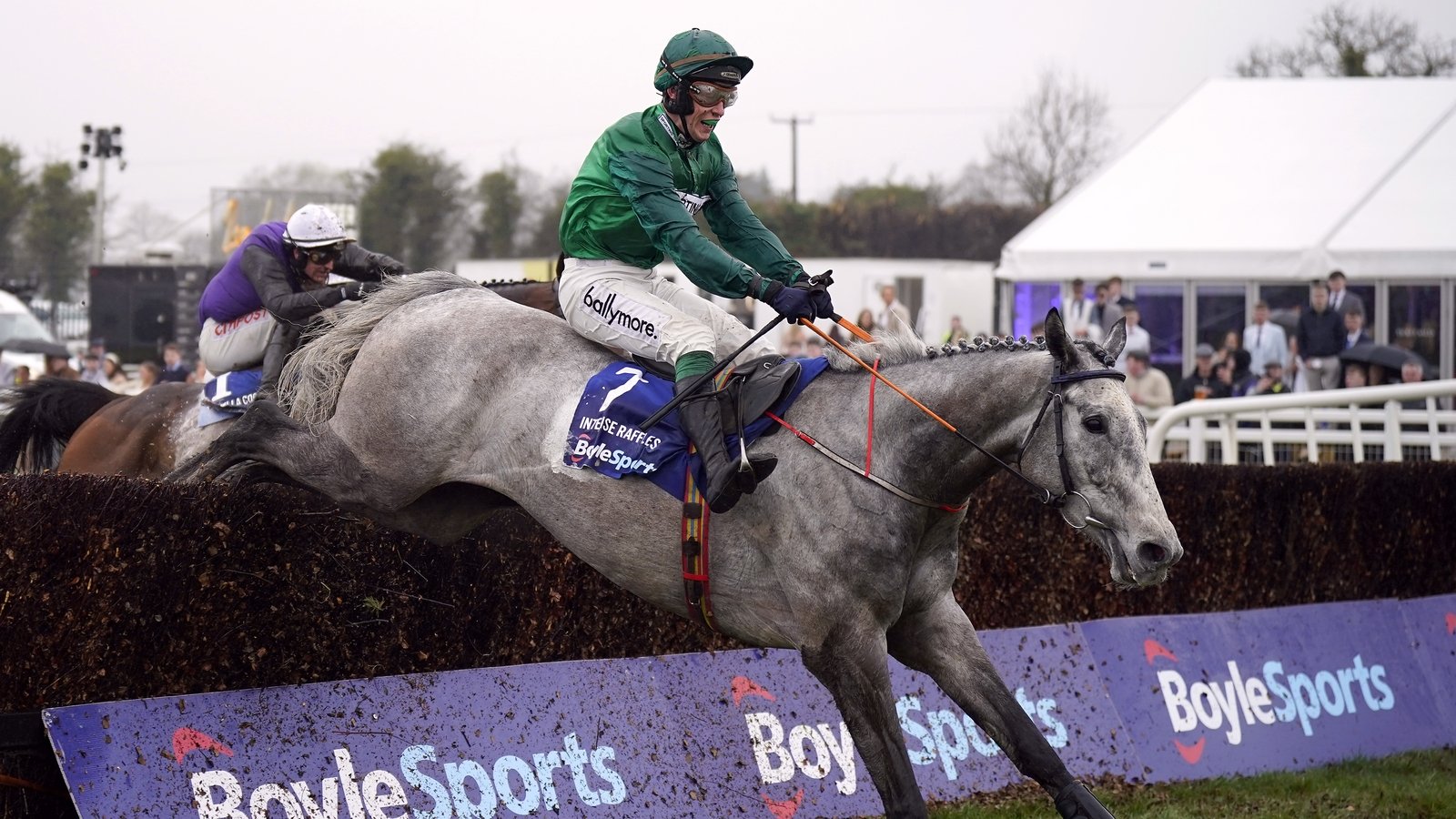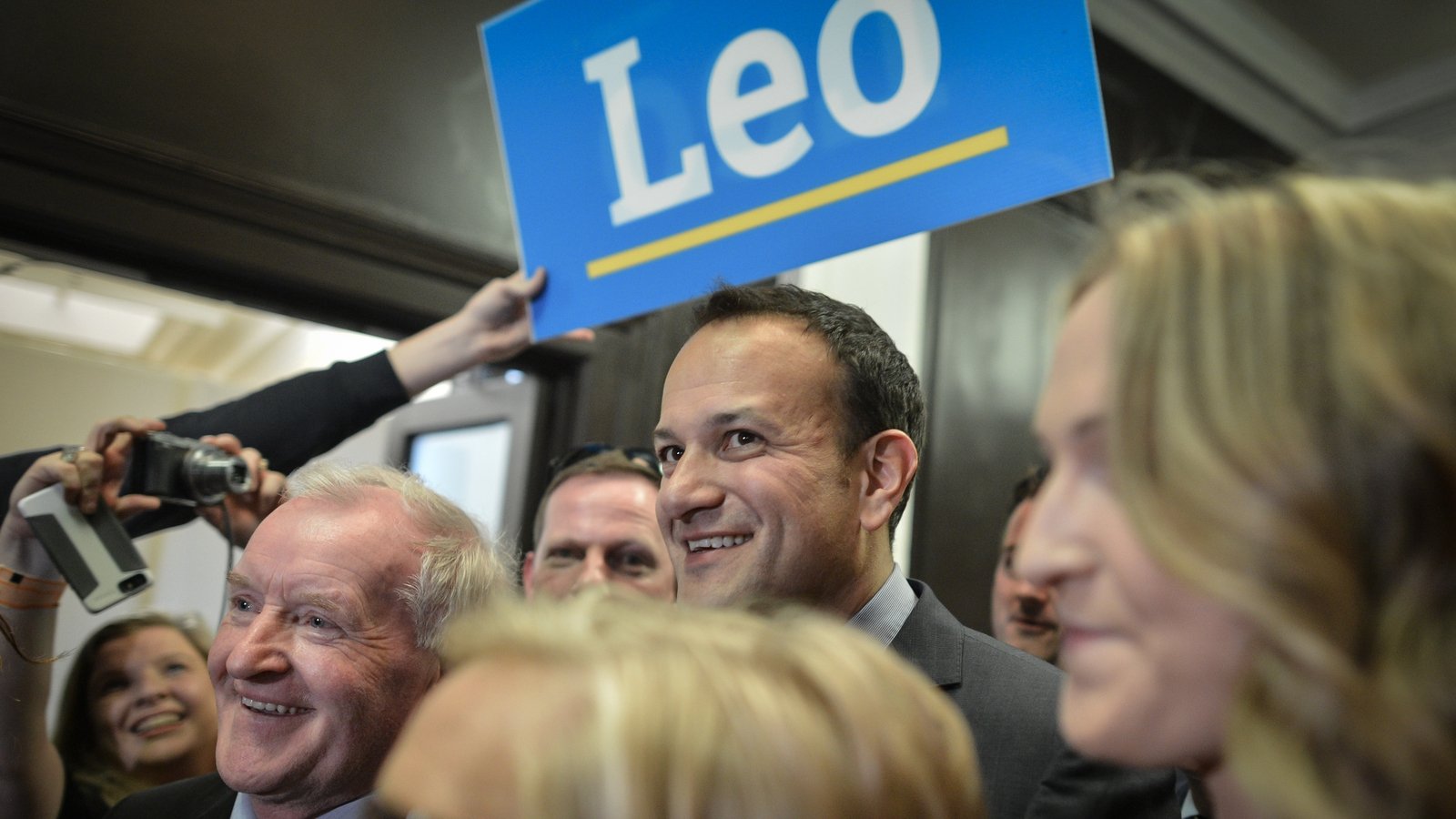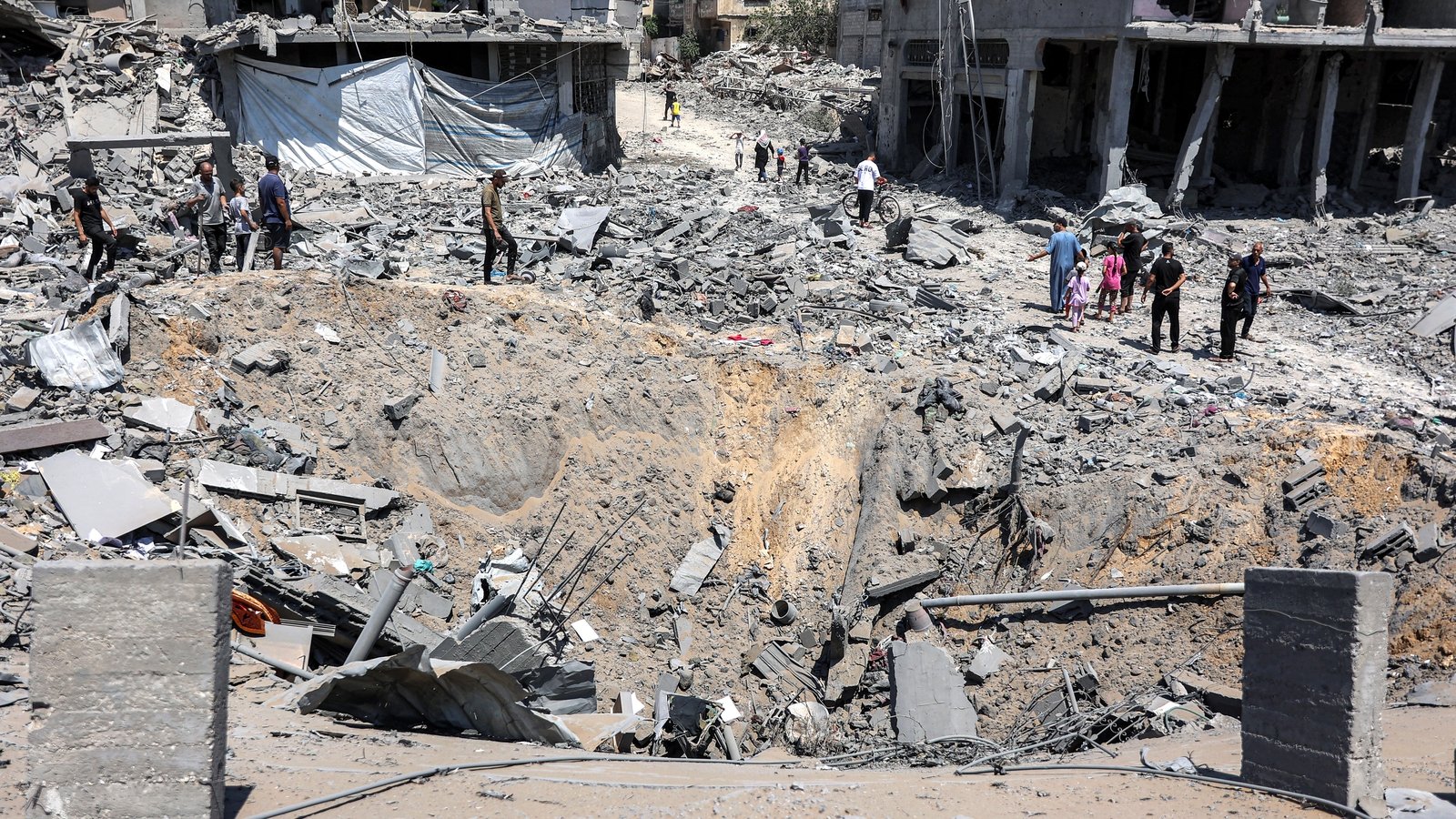Why Russia decided to blame Ukraine for the ISIS-K attack
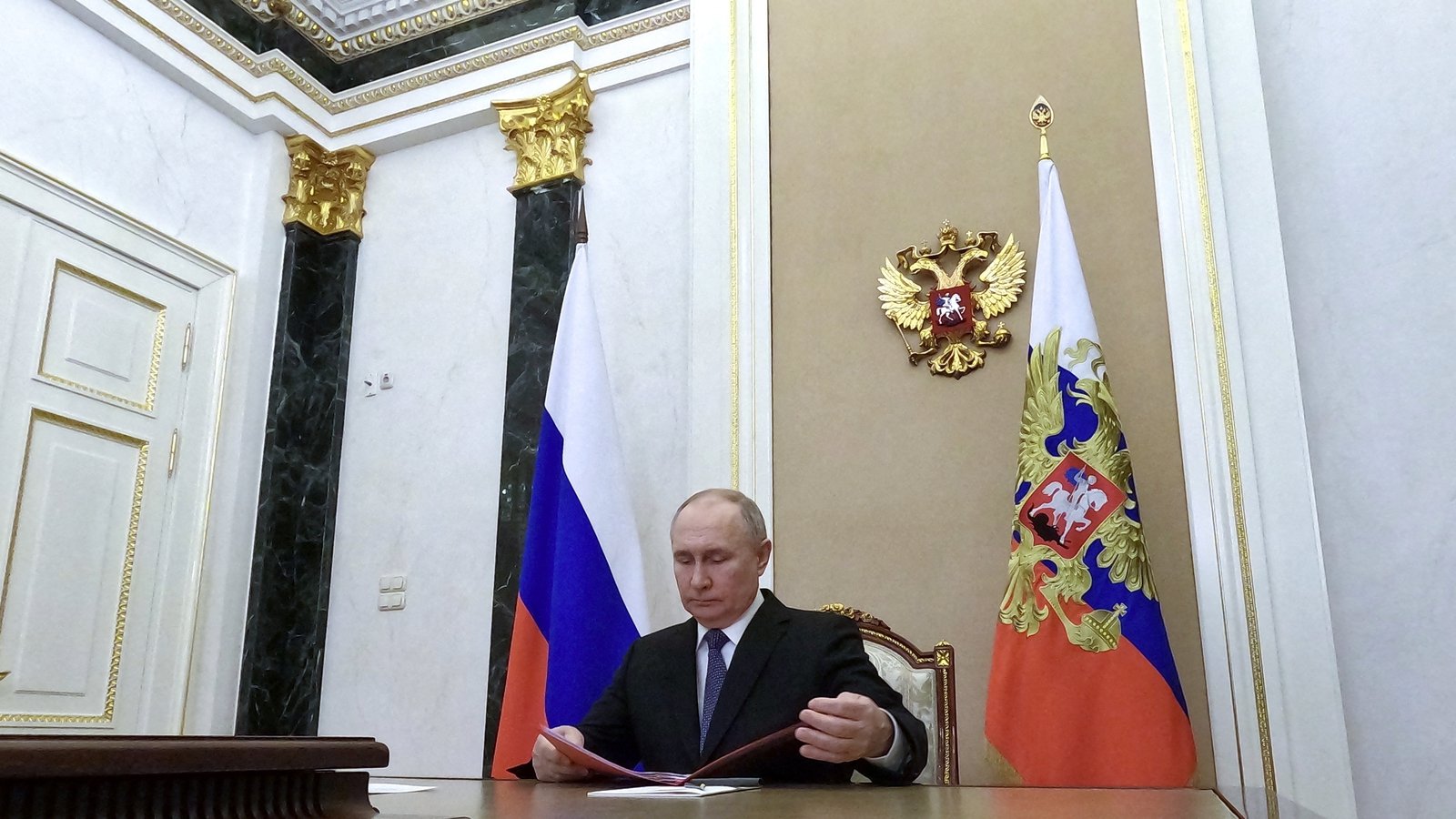
Listen to, or read, a press briefing by Maria Zakharova, the spokesperson for Russia’s foreign ministry, and you will hear the Kremlin’s repeated claim that Ukraine’s government was linked to the terrorist attack on Crocus City Hall outside Moscow on 22 March.
“In 10 years, Ukraine has been transformed by the West into a centre for the spread of terrorism,” Ms Zakharova told reporters four days after the attack, in which ISIS-K gunmen killed at least 144 people.
“American liberal Democrats,” she claimed, have been “financing the terrorist activities of the Kiev crime ring”. (Russia’s government continues to spell the Ukrainian capital in English using the Russian-language pronunciation.)
Islamic State was quick to claim responsibility for the attacks, though the Kremlin continues to frame the attack as one organised by Ukraine.
Kyiv has denied the allegations and the US National Security Council has also said that Ukraine had nothing to do with the attacks.
But the Kremlin’s version of events is working at home.
An online survey by the Open Mind Institute, shared this week with the Financial Times, found that 50% of Russians blamed Ukraine’s government for the attacks while only 27% blamed ISIS.

Igor Gretskiy, a Russian foreign policy analyst now based in Estonia, told RTÉ News that the Russian government is trying to sell a narrative that fighting international terrorism is more important than “solidarity on the Ukrainian issue”.
The Kremlin began blaming Ukraine the day after the attacks.
During a televised speech, Russian President Vladimir Putin said that the terrorists had “tried to escape and were moving towards Ukraine”.
“We have data that suggests that they were about to be moved towards Ukraine by those in Ukraine.”
At the time, Russia did not present any evidence to support its allegations.
Notwithstanding the fact that the Russia–Ukraine border is heavily militarised and would be difficult to cross from the Russian side, Mr Putin omitted to say that Russian security forces had failed to apprehend the suspects near the scene of the attacks.
He also omitted that the suspects had then been able to drive past three cities – each with its own special forces unit – before being apprehended.
Earlier this week, foreign minister Sergei Lavrov said the attacks were committed “not without a Ukrainian footprint”.
Again, no evidence was provided.
It was only yesterday, almost two weeks since the attacks, that Russian investigators said they had found pictures on the phone of one of the arrested suspects displaying a Ukrainian flag. Even if true, it is a tenuous link at best.
This week, US officials revealed that, on 7 March, two weeks before the attacks, they had warned Russian officials about the high possibility of a terror attack in Moscow.
According to the Washington Post, that warning specifically named Crocus City Hall as a potential target.
These warnings went unheeded by Russian internal security services.
In fact, Mr Putin dismissed the same warning in public during a meeting with the FSB, Russia’s internal security agency, on 19 March – just three days before the ISIS-K attacks.
“I would also like to recall the recent provocative statements by a number of official Western structures regarding potential terrorist attacks in Russia,” said Mr Putin.
“All these actions resemble outright blackmail and the intention to intimidate and destabilise our society.”
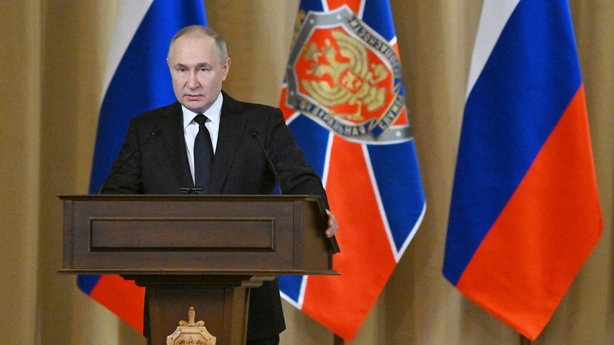
which he dismissed a warning from the US of a possible terror attack
Perhaps Mr Putin and the FSB viewed the intelligence warnings as Western interference before the Russian presidential election, when the FSB was on high alert to ensure that the elections took place as intended.
Either way, it smacks of bad judgement by the Russian president and his security agency.
The Kremlin desperately needs to plaster over the FSB’s stunning intelligence failures not to act on the warnings from the US, and Ukraine provides the perfect scapegoat.
Secondly, blaming Ukraine helps the Kremlin to deflect any criticism of its Middle East policy.
Since 2015, Russia has maintained a military presence in Syria, helping the Assad regime fight ISIS and also directly bombing civilian areas, including Aleppo in 2016.
“This attack destroys the image of Russia as a ‘good player’ within the Middle East”, said Agnieszka Legucka, a senior Russia policy expert at the Polish Institute of International Affairs.
“They are trying to push the agenda on Ukraine, because otherwise, they would have to admit that there are some problems with Russian presence and actions in the Middle East,” she said.
Mr Putin used the aftermath of previous terrorist attacks on Russian cities in 1999 and 2002 to escalate military campaigns and enact restrictive media laws.
That past form suggests that he could use last month’s attack by ISIS-K to escalate Russia’s current war in Ukraine given that the Kremlin is directly blaming Kyiv.
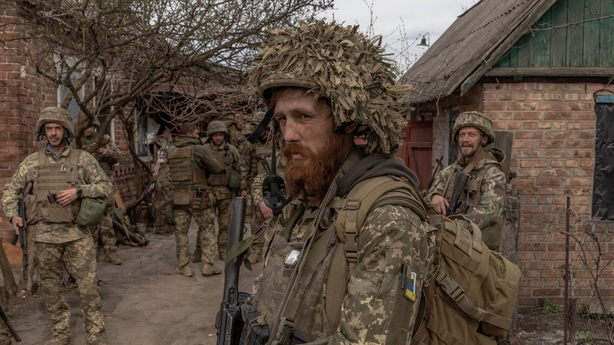
The war in Ukraine has reached a critical phase.
Drone warfare from both sides has escalated in recent weeks while the positions held by both sides along the 1,000km frontline remain largely unchanged.
Earlier this week, Mr Putin ordered the conscription of a further 150,000 Russian men into the army.
Mr Gretskiy, a research fellow at Estonia’s International Centre for Defence and Security, said Russia’s president understands that Ukraine has “become a hostage” of political division in the US over military aid for Kyiv.
Ukraine’s military has said in recent months that the shortfall in military aid is putting its defensive capabilities at risk.
In order to pre-empt a potential sharp decline in US military aid next year, European countries are currently trying to ramp up the production of armaments for Ukraine.
But the gap in military equipment will only begin to ease for Ukraine in 2025 when the production and delivery of armored vehicles and ammunition gets into full swing.
“Putin understands that Russia’s military industrial potential is considerably smaller in comparison to the West,” said Mr Gretskiy, who added that Ukrainian armament production will also continue to grow.
That is why, he said, Mr Putin is trying “to achieve as much as possible when it comes to the land grab” in Ukraine and to “undermine solidarity” in the West.


